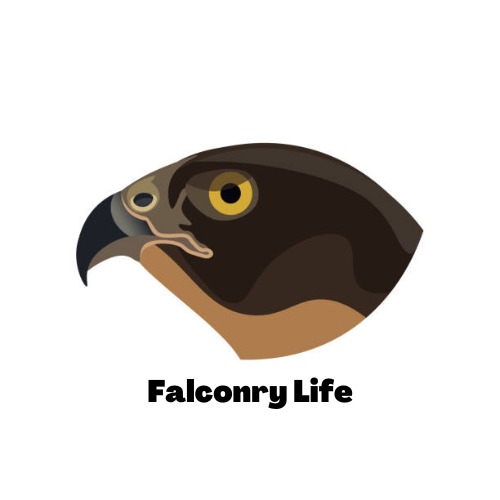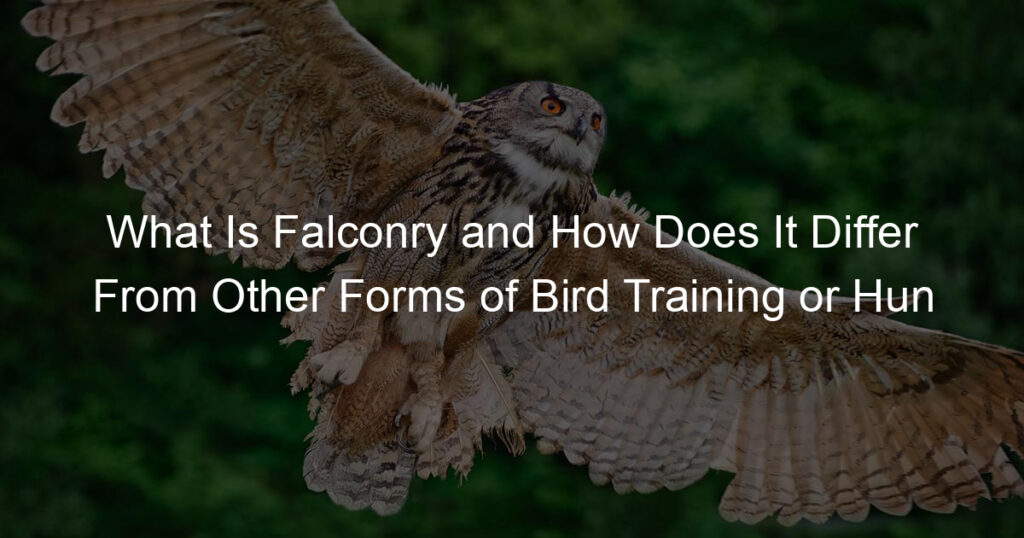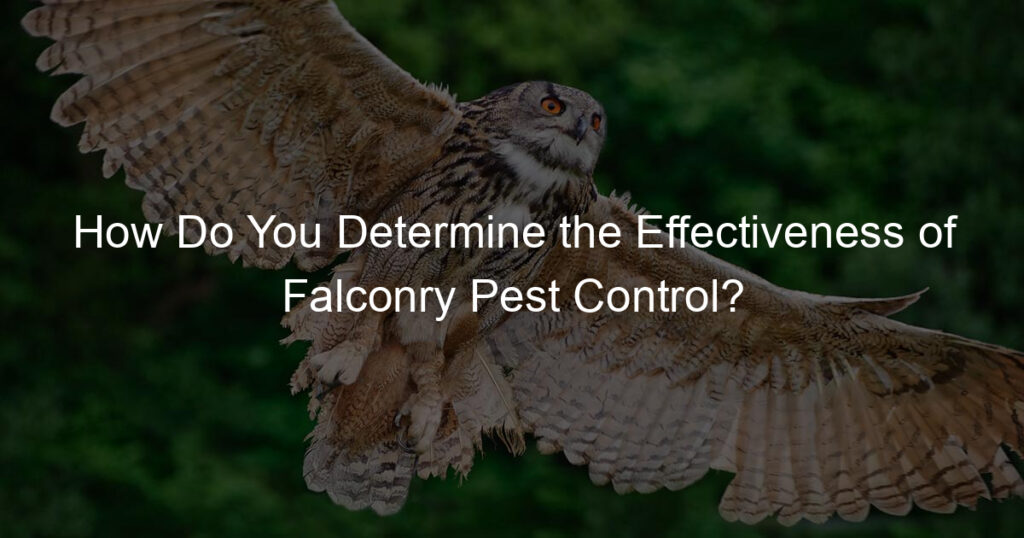Have you ever seen a bird of prey up close? These incredible creatures are fascinating to watch and even more so to work with. Falconry is the art of training birds of prey to participate in hunting with humans. This ancient practice is steeped in tradition and has been around for centuries, though it’s often misunderstood. Let’s take a closer look at what falconry is and how it differs from other forms of bird training or hunting.
How does falconry differ from other forms of bird training?
Interesting and unique, falconry is a special kind of bird training that stands out from other methods. While different at its core, it shares some principles with more well-known animal training practices. Much like dogs, hawks – one of the most commonly trained birds through falconry – can be taught to come on command. The difference though lies in the type of relationship between trainer and animal.
Falconers have a bond with their birds unlike any other, providing care for them which goes far beyond responding to verbal commands. Ultimately this time spent creates an emotional connection that results in the species being highly trainable throughout multiple areas in their life, from hunting techniques to easy bonding with humans.
What are the different types of birds used in falconry?
Taking the ancient art of falconry into the modern day, there is a range of birds that can be used for this purpose. The most commonly seen birds in use today include peregrine falcons, gyrfalcons, golden eagles, and great horned owls, with many more species being trained and utilized as well. Each bird offers its unique benefits to a practitioner of falconry thanks to their own special set of skills which make them a suitable candidate for some forms of hunting. Peregrine Falcons are swift predators swiftly pursuing their prey from the air and diving down from high altitudes to make captures.
Gyrfalcons boast a powerful strike and often tackle much larger prey than other birds might be able to take on. Golden Eagles make use of persistence and hardiness when tracking games in difficult or hard-to-reach areas like deep forests or sides of sheer cliffs. Lastly, Great Horned Owls seemingly stalk potential meals through silent methods as they silently approach their unsuspecting prey. Together all these marvelous birds continue to help practitioners around the world hunt and live happily by taking part in this age-old tradition!
How is falconry different from hunting with guns?
Falconry is a unique form of hunting that dates back thousands of years! It involves training a bird such as a hawk or a falcon to follow commands and capture the game. It’s quite different from hunting with guns, since the skill involved with falconry is in taming and training a bird, while guns rely solely on aiming and shooting. With falconry, you also don’t have to worry about the noise of gunfire scaring off your prey; it’s virtually silent as the bird soars through the air searching for its quarry.
Additionally, it requires lots of knowledge about wildlife behavior and habitats instead of just mastering marksmanship. While both require patience, you must be even more so when practicing falconry, since calming and training birds can take months or even years!
How do falconers train their birds?
Falconry has been practiced as a hunting tradition since ancient times, and today many people continue the practice. Training a bird of prey requires patience, consistency, and respect for the animal. A falconer must bond with their bird – they must have an understanding relationship. Fundamental to training is providing the bird with consistent opportunities to understand what is expected of them, in addition to establishing clear communication between both species. Keeping things simple for the bird ensures better memory retention, which is invaluable when out in the field together.
The strategies used can differ depending on the falconer, but most will use repetitive positive reinforcement alongside rewards such as food or free flight time. Through this consistent approach, falcons are taught cues that repeat readily during a time out in nature and more formal lesson blocks at home or in aviaries. These well-trained birds become reliable companions and working partners out on the hunt – a true demonstration of mutual trust and dedication!
Can you do falconry without hunting?
Falconry is an ancient hunting technique involving the use of trained raptors, typically falcons or hawks, to pursue and capture hunted species. It is practiced as both a sport and a centuries-old cultural tradition around the world. Many people may not realize, however, that it’s possible to participate in and enjoy falconry without hunting wildlife targets. Instead, numerous target flying opportunities use specialized game bird decoys or lures for improved safety and convenience.
This form of non-hunting falconry is often referred to as “flying for fun,” and provides the perfect opportunity for anyone wanting to experience the thrill of working with these magnificent birds without having to worry about bagging their prey.
What animals do falconers hunt?
Falconers are masters of their craft. A falconer typically trains and flies either an eagle, hawk, or falcon. Each species is unique, requiring different skills and strategies to hunt successfully. Eagles and hawks have shorter wingspans compared to falcons, so they must use tree branches more to make up for the difference in speed.
Falcons on the other hand are built to soar high above the sky and swoop down quickly upon the unsuspecting game. As a result, they’re a favorite among hunting enthusiasts due to their agility and hunting prowess. So if you ever find yourself in the company of a skilled falconer, rest assured that they know exactly which animals they’re capable of hunting!
Conclusion
So, there you have it: a quick overview of falconry. This ancient sport has been around for centuries and is still practiced today by people all over the world. If you’re thinking about getting into falconry, be sure to do your research and find a reputable trainer. And if you’re just looking to learn more about this fascinating topic, we hope this article has given you a better understanding of what falconry is all about.








